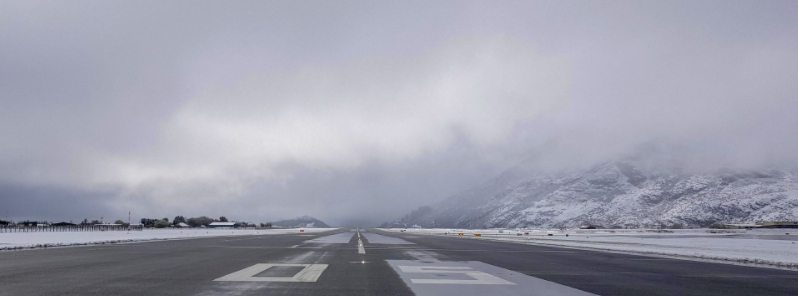Worst storm of the season hits New Zealand, bringing disruptive snow and strong winds

A rapidly intensifying severe weather system brought thick snow and wind gusts of over 100 km/h (62 mph) to parts of New Zealand on Sunday, September 27, 2020, resulting in closed roads and dozens of flight cancelations. Met Service described the storm as "the worst of the season."
In Queenstown, most flights in and out were canceled as heavy snow blanketed roads. Flurries also fell at sea level in several areas, such as Wanaka, Te Anau, and Dunedin. Snow also engulfed Oban beach on Stewart Island.
Multiple weather warnings and watches were posted for the bottom half of South Island and the capital city of Wellington.
Thick snow in Auckland prompted authorities to close several roads, while wind gusts of over 100 km/h (62 mph) were felt both in the North and South Islands.
Snowing hard near Patearoa, Maniototo pic.twitter.com/mArIVSXanw
— Julz (@art_greig) September 27, 2020
Show us your snow! Here's the intersection of SH6 and SH6A in Frankton, where it started snowing around 8am. @MetService has issued a heavy snow warning for Clutha and watches for most of the rest of Otago. Keep up to date with the forecasts https://t.co/EHldf20fdY pic.twitter.com/NAS1D0uMAF
— otagocdem (@OtagoCDEM) September 27, 2020
#SNOW update 11:30am: the snow has eased for now and our paths, roads and car parks have been cleared thanks to our Airport Operations Team. Here's a photo of our runway this morning pic.twitter.com/X3ByCo0cuj
— Queenstown Airport (@NZQN) September 27, 2020
The storm — described as "the worst of the season" — was the result of a low-pressure system moving up New Zealand from Antarctica.
Met Service noted that the system was "very unusual in how widespread the severe weather is," and it was a significant weather event, particularly as this season's winter was the warmest on record in New Zealand.
According to NIWA, the phrase "weather bomb" is used to describe dramatic weather in New Zealand. Also called a bomb cyclone, it occurs when low pressure intensifies at a pace of at least 24 hPa in 24 hours.
Below-freezing cold temperatures are forecast for parts of the South Island on Tuesday, September 29. Snow is expected for beaches in Southland, Otago, and Fiordland, but should clear by Wednesday, September 30.
The phrase "weather bomb" — what does it mean?
Used to describe dramatic weather in NZ
More appropriately called a bomb cyclone
It's when low pressure strengthens at a pace of 24+ hPa in 24 hours
Is this one a bomb cyclone? Yes! Pressure drops from 975 to 938 hPa pic.twitter.com/S0opeRrUZz
— NIWA Weather (@NiwaWeather) September 27, 2020
Aotearoa or Antarctica?
Chilly air strong winds = sub zero "feel like" temps for some over the next couple of days. How does -10 in Invercargill on Tuesday sound? pic.twitter.com/WAsNHYT13c— NIWA Weather (@NiwaWeather) September 27, 2020
Featured image credit: Queenstown Airport

It didn’t snow in Auckland. That sentence is incorrect. There was some heavy rain that caused a bit of flooding in places, mostly where stormwater drains were blocked by uncleared debris. A few roads were briefly closed until the surface water subsided.
interesting claim …
Flurries also fell at sea level in several areas, such as Wanaka, Te Anau, and Dunedin.
… given that of these three locations, only Dunedin is at sea level.
maybe it snowed underground in Wanaka and Te Anau given they are both at 200m + ???